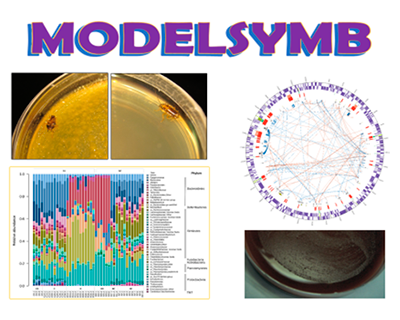MODELSYMB
Title: Basic and applied approaches to unravel and modify model symbiotic systems
Researh Group: Evolutionary Genetics
We are interested in the study of mutualistic symbiosis, a widespread phenomenon in nature. This is the case of endosymbiosis, which normally involves a one-to-one relationship between an intracellular bacterium and the host; but there is also ectosimbiosis, one-to-many associations where a large number of bacterial species are housed in different host organs, constituting its microbiota.
Our model system is Blattella germanica, a hemimetabolous insect which possess an obligated endosymbiont, Blattabacterium, harbored in specialized host cells (bacteriocytes) located in the fat body, as well as a rich and complex bacterial community in the hindgut. We therefore have the opportunity to study the dialogue between two symbiotic systems spatially separated, and to evaluate the different modes of host control over their symbionts. We will analyze the B. germanica innate immune capabilities, searching for antimicrobial peptides in the bacteriocytes and in the hindgut, which could be involved in the control of the symbiont populations. We will also study the effect of endo- and ectosymbionts on the biological fitness of B. germanica, as well as the dynamics, stability and interactions of ectosymbionts throughout the insect development when the community undergoes periodic disturbances.
The accumulated knowledge about symbiosis opens the door to practical applications. As a long-term goal, we intend to develop a new chassis for Synthetic Biology on an endosymbiont. In this project, we will use Bartonella quintana str. Toulouse to carry out improved culture and genome streamlining studies. Bartonella has evolved to live in mammalian blood cells. A minimized and domesticated strain can be used in the future for therapeutic purposes, for example, directed against hematophagous pathogens. As a first step, the experimental modification of our strain in this project will help us to better understand the model for future interventions.
Total amount: 105.875 €
Ref. PGC2018-099344-B-I00
Rosario Gil, Amparo Latorre
FEDER funds, Ministerio de Ciencia, Innovación y Universidades
















